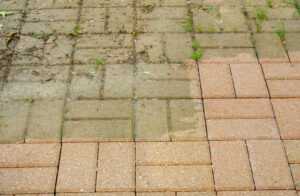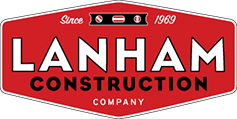
Concrete can sometimes crack in extreme weather conditions if it does not have robust support.
Concrete is a cost-effective and durable pavement material that is common in residential and commercial areas. It can last for decades without splitting or breaking when installed properly. However, concrete could often crack in extreme weather conditions if it does not have robust support. This blog contains tips for preventing cracks in concrete to help protect concrete, maintaining your property’s curb appeal, and having a sturdy foundation on your property.
The Causes of Cracks in Concrete
Incorrect installation of a concrete pavement, patio, or driveway typically leads to fractures. There are a handful of reasons why concrete develops cracks. These include:
- Too much water in a mix: concrete only needs a bit of water to make it strong enough, but a few concrete manufacturers add too much water to it during production. As the concrete starts to harden and dry, it shrinks because of the evaporation of excess water in its mix.
- Not enough drying time: while too much water could cause cracks, too little water could damage the concrete. The curing process could take weeks, so the concrete needs plenty of water to prevent the slab from drying out too quickly and cracking.
- Improper strength: concrete is available in different levels of strength, but your contractor might have picked the wrong strength for your project. You have to hire a dependable contractor or designer who knows what they are doing to make sure the concrete is the proper application for your home or business.
Kinds of Concrete in Concrete
A few factors are harmful to the structural integrity of your building, but others are a lot easier to fix. If you notice cracks in your concrete, look for these kinds to figure out what they mean.
- Shrinkage: these fractures are the result of the water drying a bit too quickly during the curing process. The evaporation and shrinking of the slab could occur due to the air temperature, humidity, concrete temperature, and wind speed.
- Hairline: you might notice a thin crack on the concrete if there was hot weather while the concrete has cured. Even though it is narrow, a hairline crack could extend through the entire slab
- Floor: cracks on the base of the concrete slab are common, but you should repair them as soon as you notice them to prevent water or any insect damage. Floor cracks are typically the result of water pressure, so try to redirect the water away from it before trying to fix it.
Crack Prevention
The way you create and also install concrete materials could prevent most cracks from ever forming. Find a reliable contractor to concrete in a way that avoids cracks in your concrete patio, wall, deck, or driveway. A few other tips help keep your concrete in good shape. Those include:
- Properly curing
- Added control joints
- Mixing the right amount of water
- Compacting the base
- Adding steel reinforcements
Lanham Construction For All Your Construction Needs
Lanham Construction is an award-winning and dependable construction company dedicated to serving your home or business with whichever construction project you have in mind. Our professional team is eager to serve customers throughout Maryland, Virginia, and Washington D.C. When you pick Lanham, you won’t ever have to worry about the process. We’re here to help every step of the way.
For more information on how we can help, visit our website or give us a call at 301-459-7545!
